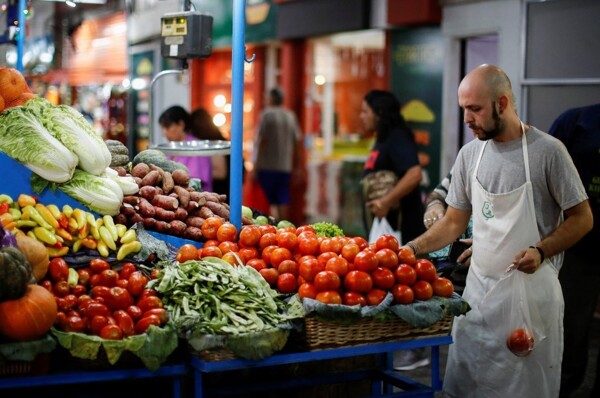
According to a report by the Center for Argentine Political Economy (CEPA), in October, prices for the six main vegetables sold at the Buenos Aires Central Market (MCBA) fell by 12.4% compared to the previous month, while prices for the four main fruits increased by 25.2%. The report analyzes changes in the Vegetables, Tubers, and Legumes (VTL) segment and the main fruits segment, and their projected impact on the Consumer Price Index (CPI). It also notes the price difference between the Central Market and supermarkets. "In October, the six main vegetables sold at the Buenos Aires Central Market (MCBA) fell by 12.4%, while the four main fruits rose by 25.2% compared to the previous month, according to a report by the Center for Argentine Political Economy (CEPA)." Drop in vegetable prices. Regarding the six species that make up the Vegetables, Tubers, and Legumes (VTL) segment, most species showed a price increase: squash by 29.6%, onion by 29.5%, lettuce by 19.7%, sweet potato by 15%, and potato by 4.2%. The only vegetable that decreased in price in October was the tomato, which recorded a drop of 36.1%. Thus, the evolutionary trend of the VTL segment of the Consumer Price Index (CPI) published by CEPA would have fallen by 12.4% against September and by 30.2% compared to October 2024. Consequently, the weight of the 'Food and Non-Alcoholic Beverages' division, which is 2.2% in the CPI, would show a 0.3% drop in the October index. Vegetables would subtract 0.3% from the 'Food and Non-Alcoholic Beverages' category within the CPI. More expensive fruits. The fruit segment, composed of bananas, lemons, apples, and oranges, recorded an increase in its weighted prices of 25.2% compared to September 2025, which allows projecting an increase in the price of the 'Fruits' segment of the CPI by 25.9%. It impacts at 1.3% of the weight of the 'Food' division of the CPI, which would indicate an upward trend of 0.3% in the 'Fruits' category of the CPI for October. The banana, lemon, and orange presented monthly increases of 20.7%, 106%, and 14.3%, respectively. The only one that did not increase was the apple, which contracted by 10.6% in October. The annual variation of the segment was 28.9% and an accumulated 14.4% for the year. The increase in the price of lemons is explained by the seasonal period in which it is found, where income decreases and the sales value increases. Inflows from Salta and Tucumán stood out, complemented by smaller contributions from Entre Ríos and Corrientes; and imported batches from Chile and limited batches from Brazil. Fruits would subtract 0.3% from the 'Fruits' category of the Consumer Price Index. Difference with supermarkets. Regarding the vegetable category, supermarkets showed a slight increase in the average current prices: it was 0.3% against September. The potato and lettuce were the species that increased their prices by 35.3% and 23.6%, respectively. The tomato (-18%), onion (-11.1%), and sweet potato (-3.8%) decreased their prices during the tenth month of the year, while the squash showed no price variation. Lettuce, for its part, is once again the vegetable with the greatest price dispersion among supermarkets: 61.5%. If the gap between supermarkets and the MCBA is analyzed, lettuce is again the one with the largest price gap (292.3%). On the other hand, the one with the smallest gap is the squash: 7.5%. Taking the six VTL segment vegetables, the price gap between supermarkets and the MCBA amounts to 120.3%, 28.6 percentage points (pp) higher.













